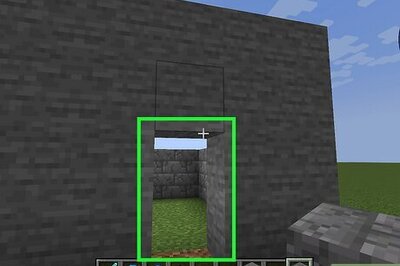
views
Alzheimer’s disease, also known as Alzheimer’s dementia, refers to the progressive loss of memory and mental abilities, significantly interfering with daily routines. According to 2023 studies, Alzheimer’s disease affects approximately 7.4% of adults over the age of 60 in India. Globally, of the 55 million people living with dementia, an estimated 60% to 70% have Alzheimer’s disease.
Alzheimer’s is caused by changes in the brain that result in protein deposits, leading to the shrinkage of the brain and eventual death of brain cells if left untreated. These changes begin years before symptoms appear and worsen over time.
Dr Bhavya Saxena, Consultant Pathologist, Metropolis Healthcare Limited, says, “Early signs and symptoms include confusion with time, place, or people, memory loss, difficulty planning or completing routine tasks, vision changes, trouble speaking or writing, forgetfulness, mood or personality changes, and poor judgment. In the early stages, an individual may notice difficulty remembering things, but as the disease progresses, family members or friends are more likely to detect these issues.”
The exact causes of Alzheimer’s disease are not fully understood. Researchers believe it is often the result of a combination of genetic, lifestyle, and environmental factors that affect the brain over time. Damage typically starts in the brain region that controls memory.
Dr Saxena shares the two proteins that are primarily involved in the development of Alzheimer’s:
- Beta-amyloid proteins: When these fragments clump together, they damage neurons and disrupt communication between brain cells. These clumps form larger deposits known as amyloid plaques.
- Tau proteins: These proteins play a crucial role in supporting and transporting materials within brain cells. In Alzheimer’s patients, tau proteins change shape and form structures called neurofibrillary tangles, which damage the transport system and lead to cell death.
Common risk factors for Alzheimer’s include old age, genetics, Down syndrome, head trauma, pollution, alcohol consumption, poor sleep, and unhealthy lifestyle choices. While there is no cure for Alzheimer’s disease, early diagnosis is essential to slowing its progression.
Neuroimaging is commonly used today for early detection and includes:
- Structural imaging: Identifies shrinkage in the hippocampus, an early sign of Alzheimer’s.
- Functional imaging: Studies using fluorodeoxyglucose (FDG)-positron emission tomography (PET) show reduced glucose use in the brain, especially in areas responsible for memory, learning, and task management.
- Molecular imaging: PET scans with specific agents can detect beta-amyloid deposits in the brain.
Additionally, cerebrospinal fluid (CSF) analysis can evaluate tau and beta-amyloid proteins in the brain. The CSF amyloid ratio is useful for early diagnosis, and increased levels of neurofilament light (NfL) have been associated with neurodegenerative diseases like Alzheimer’s. Blood tests to detect tau, beta-amyloid, or other biomarkers are also emerging as potential tools for early identification.
Genetic testing for the APOE-4 gene, the strongest risk gene linked to Alzheimer’s, can help identify individuals at higher risk of developing the disease.
In advanced stages, Alzheimer’s can disrupt brain function, leading to complications like dehydration or infections, which can ultimately result in death. While certain medications may help improve or slow the progression of symptoms, lifestyle changes such as managing blood pressure and blood sugar, exercising regularly, avoiding smoking, and maintaining adequate sleep can help reduce the risk of developing Alzheimer’s.




















Comments
0 comment